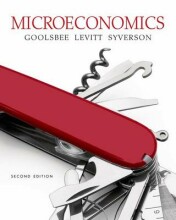Marketing: Building Profitable Customer Connections
37 important questions on Marketing: Building Profitable Customer Connections
What is form utility?
What is time utility?
What is place utility?
- Higher grades + faster learning
- Never study anything twice
- 100% sure, 100% understanding
What is ownership utility?
What are the 4 types of marketing?
2. Place marketing - drawing people to a particular place. e.g city
3. Event marketing - marketing or sponsoring events like sports events or telethons
4. Idea marketing - marketing ideas that change how people think or act. don't smoke, buckle your seatbelt
What are the 4 time eras?
2. Selling era
3. Marketing era
4. Relationship era
What characterised the production era?
What characterised the selling era?
What characterised the marketing era?
What characterises the relationship era?
What is the marketing concept?
What is a full marketing partnership?
What is customer satisfaction?
What is the difference between perceived and actual value?
What are the 2 traps you can encounter when trying to achieve customer satisfaction?
2. Underpromising. Not a lot of customers will be willing to try product, which will lead to only a small base of satisfied customers, which is often not enough to sustain a business.
What are the 4 characteristics of a well-chosen target market?
2. Profitability - people must be willing to spend more than costs + marketing of product
3. Accessibility - target must be reachable through affordable channels
4. Limited competition - crowded market is tougher to crack
What are consumer marketers (B2C)?
What are business marketers (B2B)?
What are the 4 types of consumer market segmentation?
2. Geographic - based on where consumers live, e.g. no big cars in small-street cities
3. Psychographic - based on consumer attitudes, interest and lifestyles, e.g. green cars
4. Behavioural - based on behaviour consumers towards product, e.g. heavy users
What are the 3 types of business market segmentation?
2. Customer-based - based on characteristics of customers, e.g. size or type
3. Product-use-based - based on how customers use product, e.g. software package support
What is a marketing mix?
1. product - brand name, package design, customer service, etc.
2. price - fair price that is relative to benefits products
3. distribution - delivering to the right people, is about warehousing, selling outlets, etc.
4. promotion - communication about the product
What are the 5 key elements of the external environment?
2. Economic environment (monitor economic change, and react to it)
3. Social/cultural environment (lifestyle, population shifts, etc.)
4. Technological environment (both on the surface (iPhone) and below (production processes)
5. Political/legal environment (changing laws, etc.)
What are indirect competitors?
What is a market share?
What is consumer behaviour?
What are the 4 elements that influence consumer behaviour?
2. Social (family, friends, reference groups (group that gives consumers point of comparison))
3. Personal (demographics (age, etc.) and personality)
4. Psychological (Motivation, attitudes, perceptions, learning)
What are the steps in the consumer decision process?
2. Information search - where can I find product, etc.
3. Evaluation of alternatives - compare prices, brands, etc.
4. Purchase decision - the actual buying
5. Postpurchase behaviour - regret for spending too much, etc.
Does the consumer decision process always apply?
What is business buyer behaviour?
In what ways do consumers and business buyers often differentiate in behaviour?
For what 3 causes do businesses use marketing research?
2. To monitor and predict customer behaviour
3. To evaluate and improve each area of the marketing mix
What are the 2 main categories of marketing data?
2. Secondary data (existing data that marketers gather or purchase for a research project)
What are the advantages and disadvantages of primary data?
+ Data is fresh, not outdated
+ No one else has it - proprietary
- Often expensive
For secondary data it is the other way around
What is observation research?
What is the advantage and disadvantage of survey research?
- People might not be honest or accurate about their motivations, etc.
What 2 factors have had a very big impact on marketing in the last few decades?
2. Emergence of internet and digital technology (caused shift in power from producer to customer)
What is green marketing?
The question on the page originate from the summary of the following study material:
- A unique study and practice tool
- Never study anything twice again
- Get the grades you hope for
- 100% sure, 100% understanding































